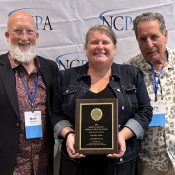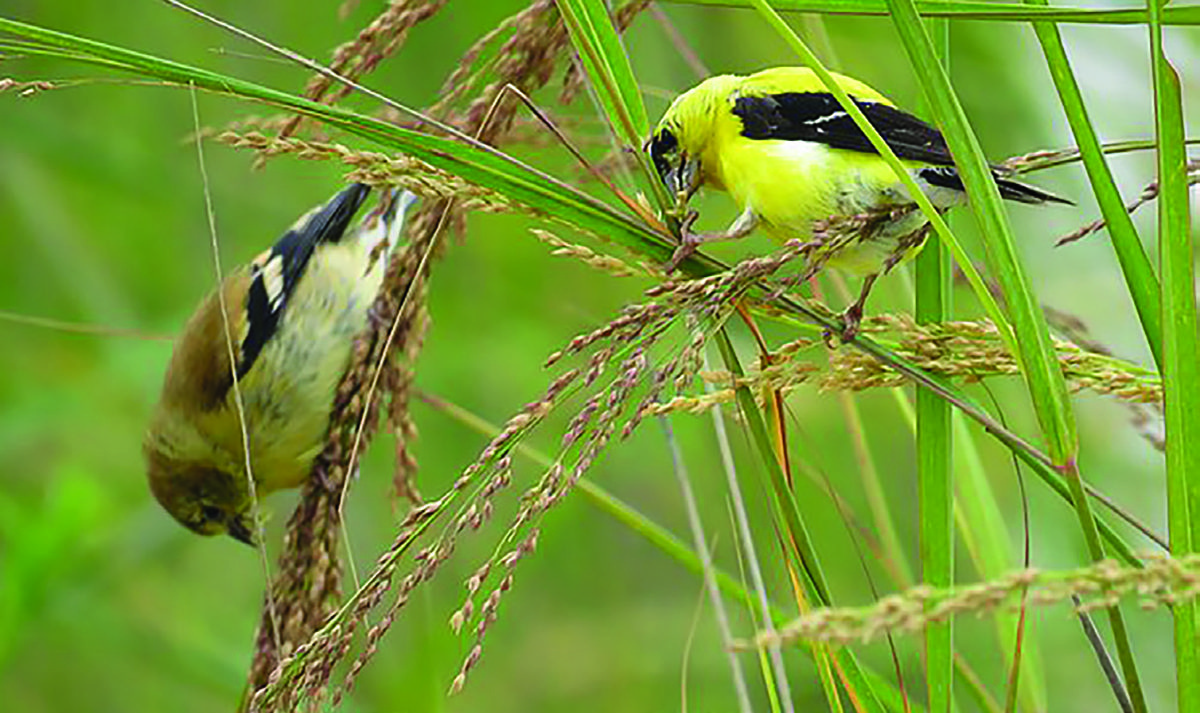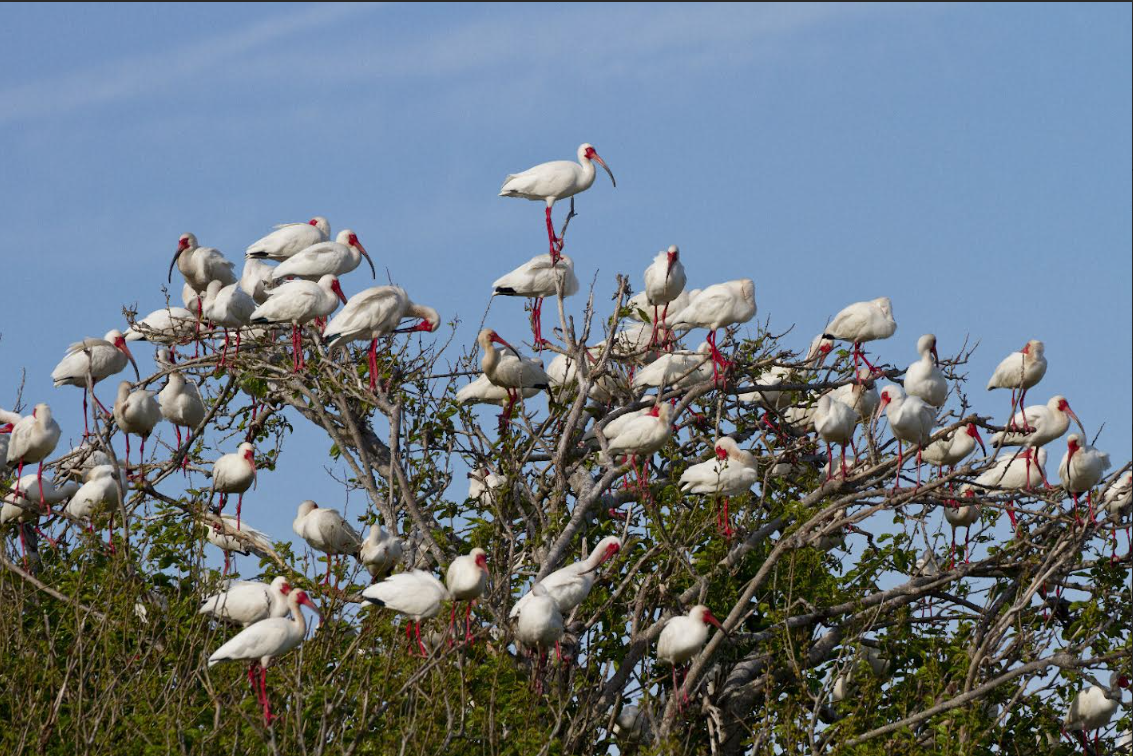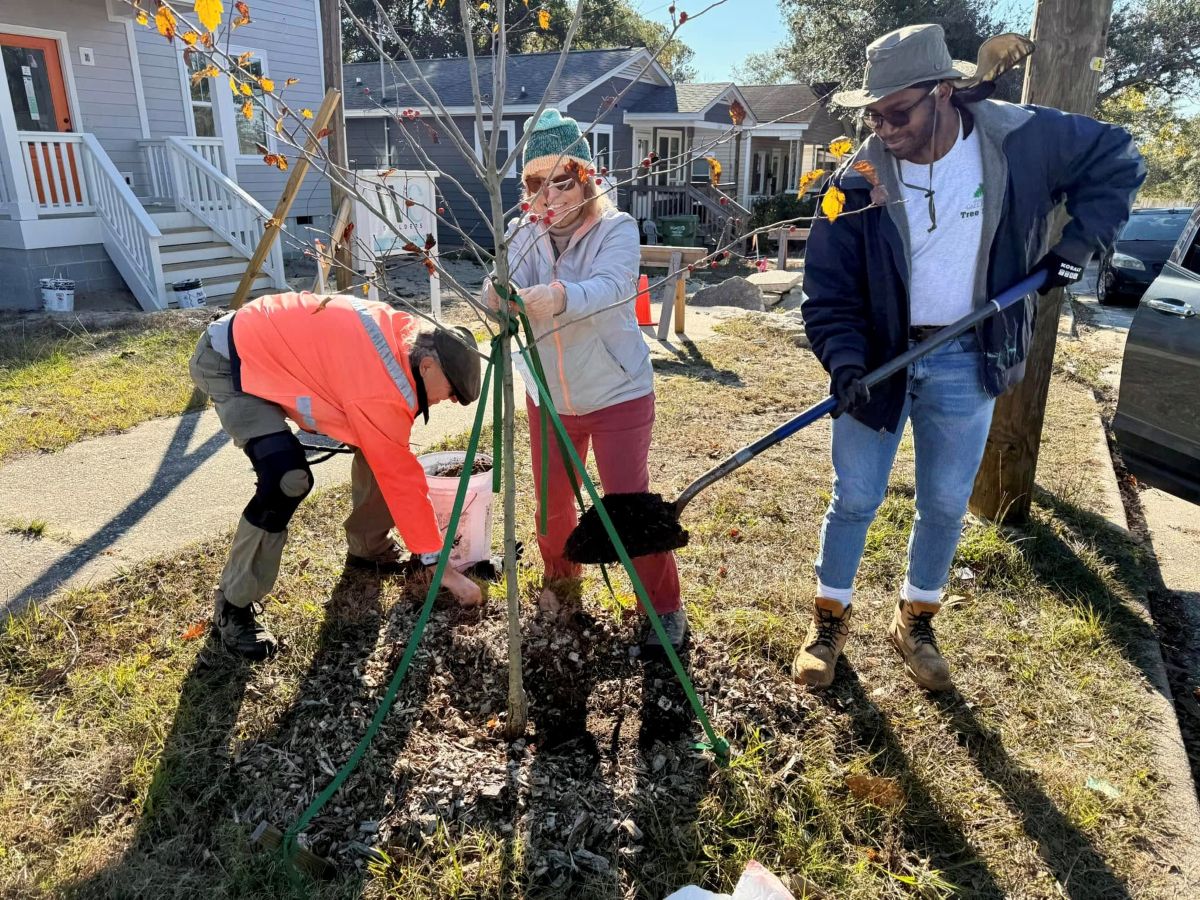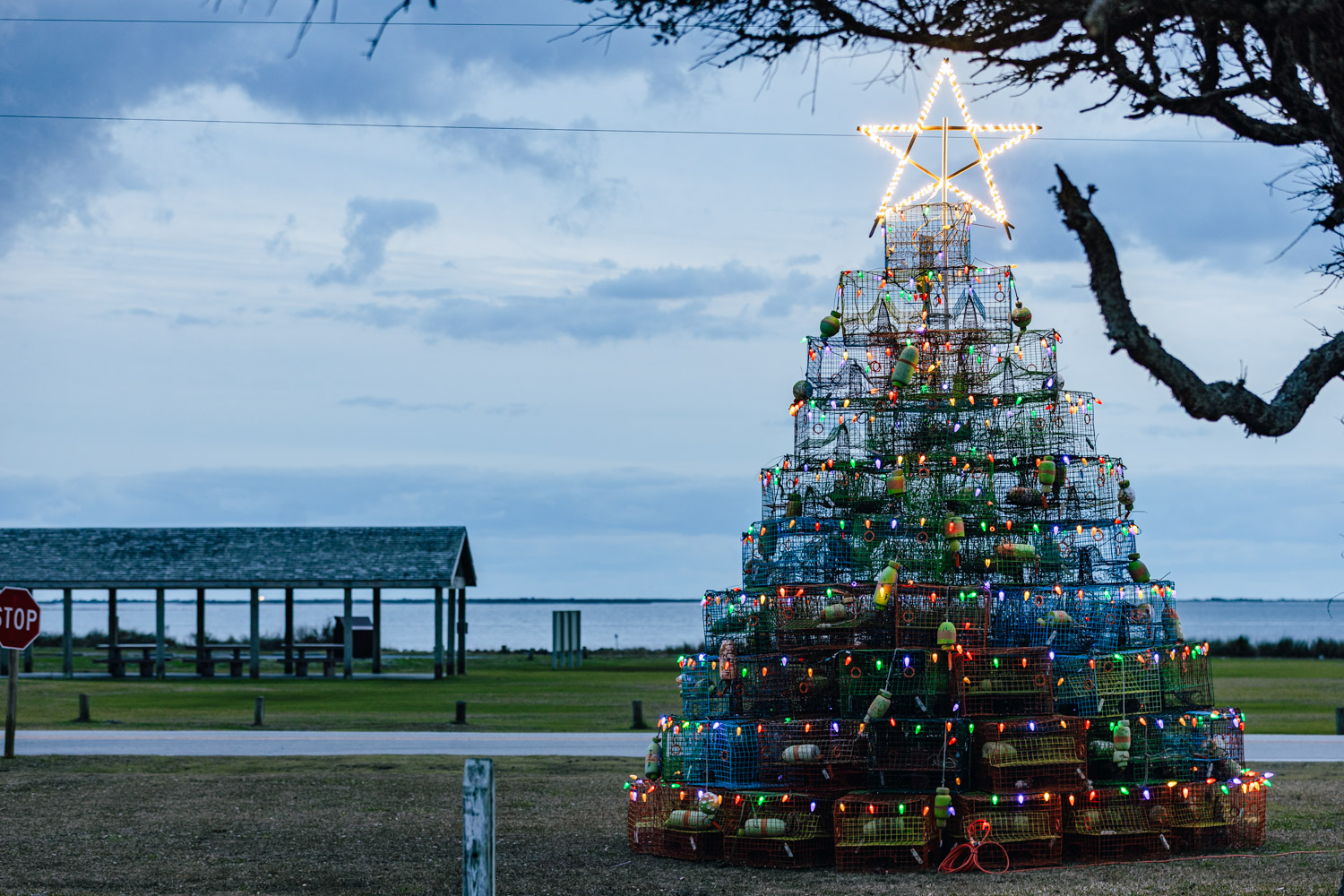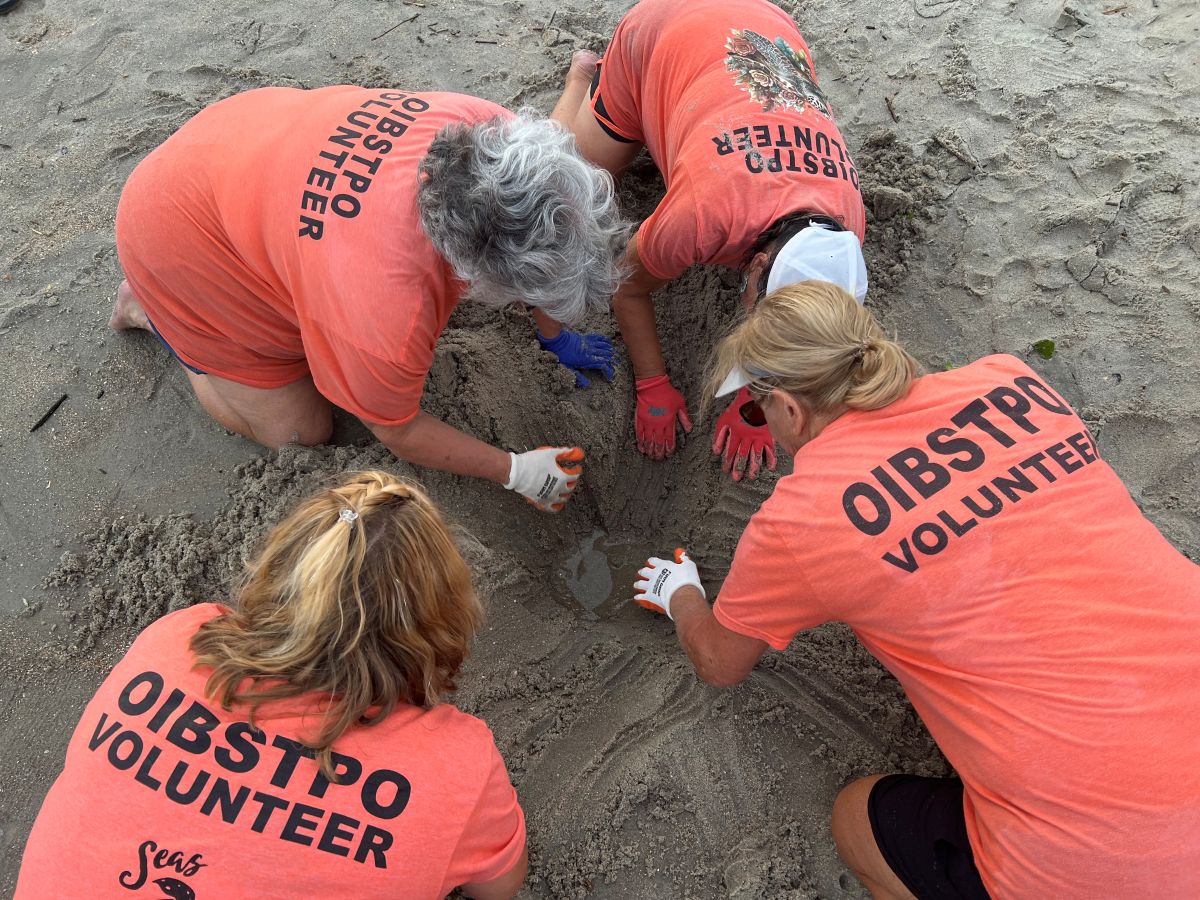
The North Carolina Sea Turtle Project kept careful watch over incubating nests threatened by the ocean overwash, storm surge and erosion associated with mid-August’s Hurricane Erin.
Under the North Carolina Wildlife Resources Commission, the N.C. Sea Turtle Project is a coastwide, collaborative conservation effort that brings together federal, state, conservation and volunteer groups to monitor sea turtle activity, particularly during nesting and hatching season from early May to mid-November.
Supporter Spotlight
The commission’s sea turtle biologist Matthew Godfrey, who manages the project, explained to Coastal Review that about half of all sea turtle nests laid in the state had finished incubation before Hurricane Erin impacts began to arrive. Of the nests that were still incubating, nearly all experienced at least some overwash because of large waves and wind associated with the hurricane.
Coastal flooding and other signs of the storm moving north off the coast began around Aug. 19 and lasted throughout the week as the storm moved north.
“Several beaches reported observing entire nests being washed away, and others reported today (Aug. 26) that some remaining nests experienced the emergence of hatchlings overnight,” illustrating that some sea turtle eggs can withstand storm-related inundation and still produce hatchlings, Godfrey said.
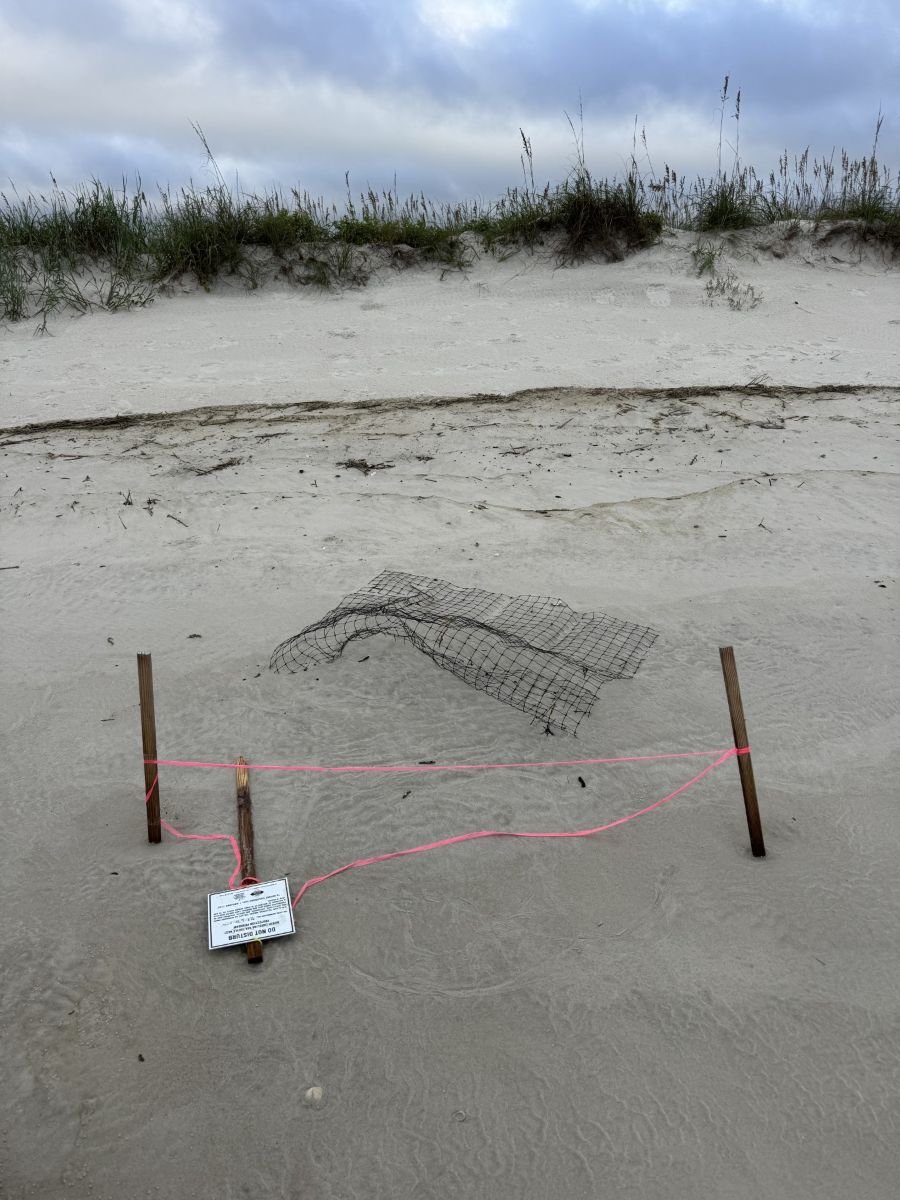
Loggerhead, green, Kemp’s ridley, leatherback and hawksbill sea turtles all come ashore to lay eggs. The females return to the beach every few weeks to nest, up to four times a season. It usually takes about 55 days for the eggs to hatch. Nests can be excavated after a minimum of three days after the first hatchling emerges, or when the commission grants permission, if the nest is unsuccessful.
“We won’t have a full account of how many nests were lost or negatively impacted until the end of the season, but based on experience from other years, it is likely that those lost to Erin will include nests that had been moved from more exposed areas to seemingly safer areas of the beach,” he said.
Supporter Spotlight
Godfrey explained that sea turtles have been around for millennia, surviving despite impacts from storms and hurricanes on their nests.
“Part of the life history strategy of sea turtles is to lay large clutches of eggs in nests on sandy beaches across different locations and times of the summer to spread out the risks associated with egg incubation in a dynamic environment, such as coastal areas,” he said. “While storms like Hurricane Erin may reduce the production of hatchlings from some specific nests, the overall rate of hatchling production from NC nests should remain relatively good this year.”
Through the Sea Turtle Project, the Wildlife Resources Commission permits more than 20 different groups that help monitor sea turtle nesting and strandings on North Carolina beaches.
Outer Banks
Network for Endangered Sea Turtles, or N.E.S.T., President Tony Parisi said that there have been 29 nests this season from their patrol area, the Virginia line to south Nags Head. There were 18 nests as of Aug. 20, before the state began seeing significant effects from Hurricane Erin.
“There isn’t a lot we can do to protect nests in situations like this,” Parisi explained. “Before Erin struck, our main preparation for the storm was removing stakes and signs, and making provisions to find the nest if everything gets washed away or covered.”
One nest in Corolla was partially washed out, and a few others had significant sand accumulation, including one in Corolla and another in Southern Shores, Parisi said, adding that the organization won’t know how many nests or hatchlings survived until the nests are excavated.
“The survival rate is dependent on several factors, primarily how much a nest was over washed and how long it remained underwater,” she said. “In some cases, we may have to wait 75 days after a nest is laid before we can excavate,” or 90 days for nests laid after July 31.
Cape Hatteras National Seashore Public Affairs Specialist Mike Barber said the staff during post-storm assessments found that out of 109 nests that were in the ground prior to Hurricane Erin, 35 were lost due to storm impacts and 72 nests were overwashed, which may increase losses attributed to the storm.
Central Coast
At Cape Lookout National Seashore, Hurricane Erin washed out 49 sea turtle nests, but 69 nests remained on the seashore’s beaches as of Aug. 27. There have been 225 sea turtle nests so far this year at the National Park Service site in Carteret County.
Chief of Resource Management Jon Altman said that before the storm, staff excavated and inventoried the hatched nests to collect the data before those nests were washed out.
“Since we lose a few days of monitoring, we know we will lose some information,” he said.
That information can include knowing when nests hatch during a storm and survive, or when new nests are laid on the beach and track evidence is obscured by strong winds.
“Without direct observation evidence those events are unknown,” he said.
After the storm, staff assessed the beach and documented nests that were washed out, buried under sand or overwashed, and how many remained on the beaches. The nests in or on the dunes, where there’s higher ground, generally fared better.
“The sea turtle nesting season extends into September, and we have had three new nests since Hurricane Erin passed by,” Altman said last week.
For Fort Macon State Park, five of the six nests at the site hatched before the storm, Superintendent Randy Newman said.
There’s one nest still on the beach, which was overwashed several times during the storm with about a foot of sand being deposited on top of the nest. “We have removed the sand back to pre-storm levels over the nest. Now we wait a couple of weeks to see if the nest will hatch or not,” he said.
Atlantic Beach Sea Turtle Project Volunteer Coordinator Michele Lamping told Coastal Review that fortunately, the sea turtles had already hatched and entered the ocean before the storm. Lamping, who is the sea turtle specialist for the North Carolina Aquarium at Pine Knoll Shores, said the ocean reached the dunes in several places and would have drowned the nests had they not already emerged and entered the sea.
Farther south on Bogue Banks, Emerald Isle Sea Turtle Patrol Program Coordinator and President Dale Baquer said that this year’s sea turtle season got off to a great start with 23 nests, which is better than average.
There were 13 successful hatches, with an 85% total hatch rate, leading up to the storm.
“We knew Hurricane Erin would bring high tides. We had planned to remove all extra equipment off the beach, and pound our stakes in Monday night ahead of the storm. We were inundated with higher tides sooner than expected,” Baquer said, so volunteers rushed out the afternoon of Aug. 18 to shore up the nests after receiving calls about the nests being under water.
Baqur said there were 10 nests before the storm, one of which hatched overnight during the storm, and one was completely washed out — the turtles and eggs were swept out by waves.
The volunteers are waiting until the remaining eight nests “either hatch or approach day 75 of the incubation cycle, when we are permitted to excavate,” he continued. “The nests took on some heavy waves but sometimes nature can be amazing.”
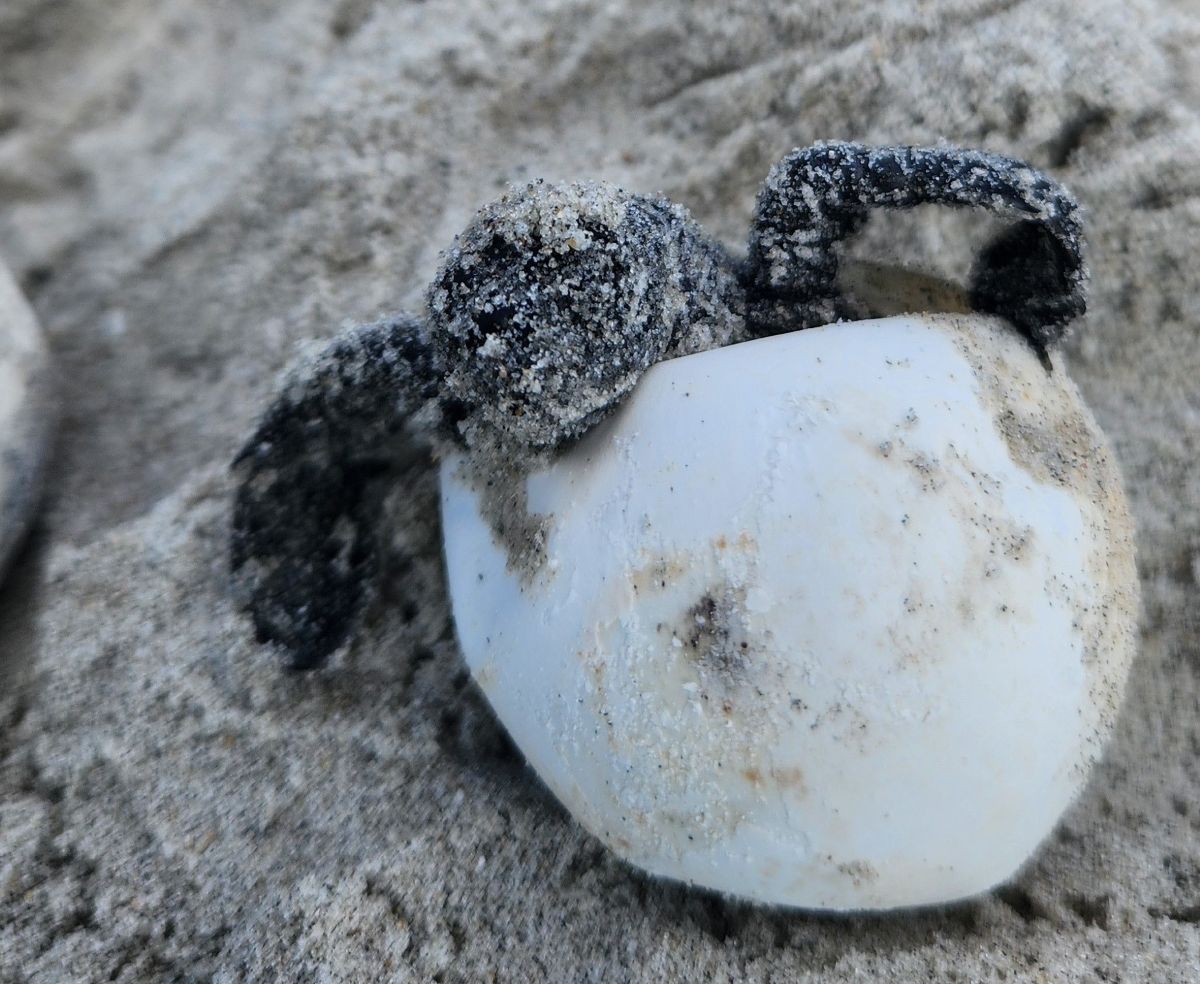
Hammocks Beach State Park Ranger Renee Evans said that there were nine nests, six of which successfully hatched before Hurricane Erin on the beach at the park near Swansboro.
The remaining nests experienced significant over wash, and one nest is completely gone. Another nest saw some overwash, and per the commission’s program protocol, the nest will be excavated after 75 days, when they’ll be able to determine the final outcome of that nest.
“However, our third nest survived all odds,” Evans said. On Monday, Aug. 25, “I discovered that the nest hatched at some point during the storm last week. Park staff excavated the nest and found 155 eggs in which 80 of them had hatched. There were even 37 live hatchlings still in the nest and ready for that swim. Park staff released them to the ocean.”
Cape Fear Region
Karen Beasley Sea Turtle Rescue and Rehabilitation Center Deputy and Conservation Director Terry Meyer said that for the region they patrol, “fortunately, we had about half our 90 nests hatch prior to the high tides.”
The Topsail Island-based organization lost fewer than 10 nests outright, Meyer said, and how the nests were lost depended on where they were on the island’s more than 20 miles of beach.
In some cases, markers indicating where the nest’s location were washed out and no eggs were found after the storm. The beach gained sand as well. Some eggs were under 2 feet of sand, and had several tides of standing water, “so we wait and see what happens there,” Meyer said. About a dozen nests were high and remained dry, and were expected to hatch as normal.
Audubon North Carolina Coastal Biologist Lindsay Addison said the conservation organization monitors Lea-Hutaff Island, a 4-mile-long undeveloped barrier island between Figure 8 Island and Topsail Island.
“This year, we have 23 nests and three probable nests,” which refers to egg chambers that were not confirmed when the crawl was found, Addison said.
“When Erin passed offshore, 15 of those 26 total nests were still incubating. Nine of them experienced overwash. We are continuing to monitor all nests on the island and will know over time if the eggs in the overwashed nests survived or failed,” Addison said. “After the storm has passed, we record the condition of the nests and may, depending on the circumstances of each nest, remove any additional sand that has accumulated over the top of the nests.”
There were 40 documented sea turtle nests, all loggerheads, at the Masonboro Island Reserve. The reserve is one of 10 protected sites under the North Carolina Department of Environmental Quality’s Division of Coastal Management.
Southern Sites Manager Elizabeth Pinnix said last week that when the effects of Hurricane Erin began on Aug. 19, almost half of the nests, or 17 of the 40, had already hatched.
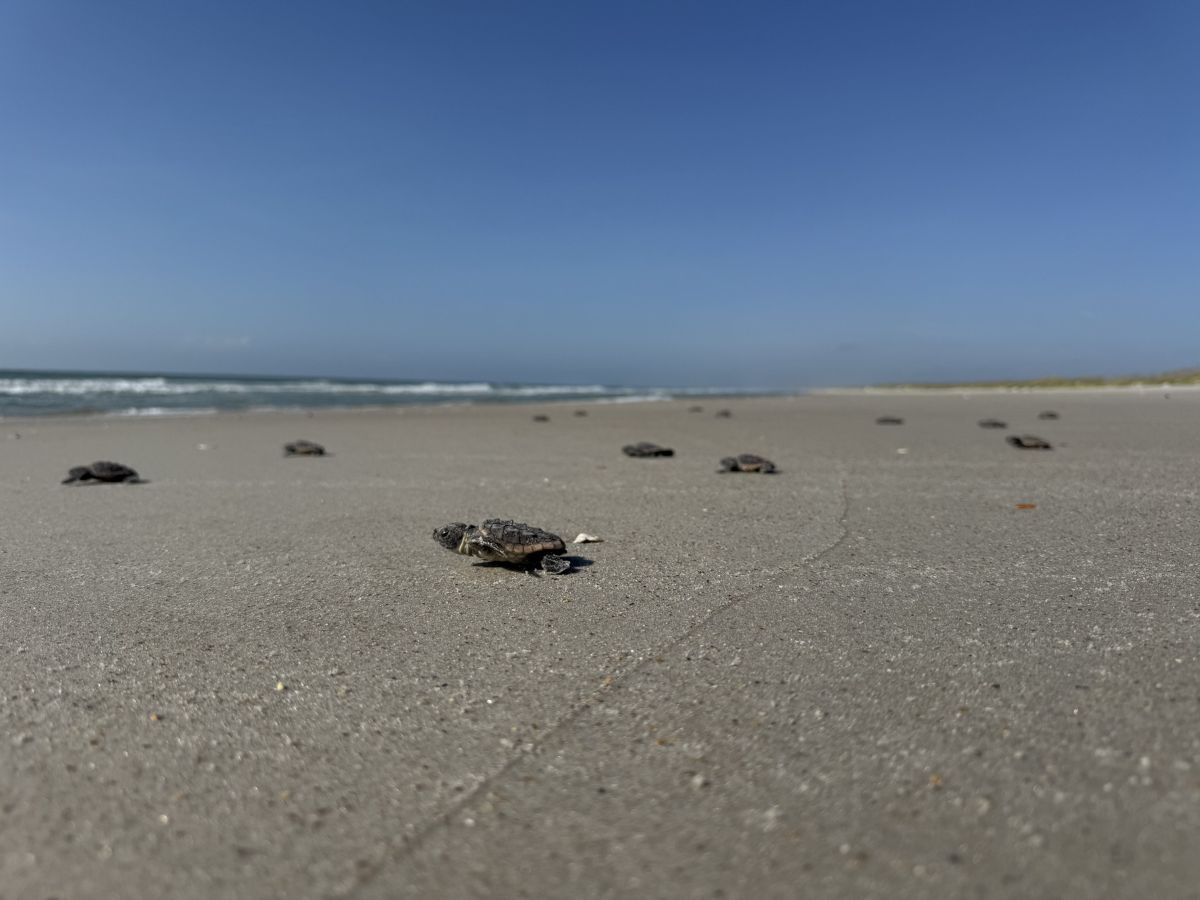
Hurricane Erin produced large surf and wave runup on most of the 8.5-mile stretch of Masonboro Island with some of the more low-lying and dune-lacking areas experiencing wave overwash from the ocean to the marsh.
The reserve lost two nests as a result. Nearly half of those remaining experienced some overwash.
As of last week, the reserve had 19 nests still incubating on the beach. “Fortunately, most of our remaining nests were situated on dunes or higher portions of the beach where they experienced overwash, but were not completely washed out and lost. Many nests can experience a small amount of overwash events and remain viable, as long as they don’t remain in standing water or become exposed for a long period of time,” she said.
Bald Head Island Conservancy Sea Turtle Biologist Paul Hillbrand explained that during the storm, both daily high tides were consistently reaching the dune toe in most areas of the island. The team assessed how much water was on the beach during high tides and how much sand was accumulating or being displaced.
“Once Erin passed, we still had significant tides into the weekend. We started recovery Sunday and Monday when we replaced runways and dug out cages (nests) that had accumulated more than a foot of sand,” he said.
Of the 22 remaining nests at the time, all but one was either significantly washed over or consistently in the surf line in the hours surrounding the high tides.
“We were fortunate to not have any nests completely washed out, but significant overwash is not ideal. That being said, we are hopeful that some of the resilient nests are capable of withstanding this tide event,” Hillbrand continued. “We have had two nests hatch since Erin passed, providing hope for my team, volunteers, & the island alike.”
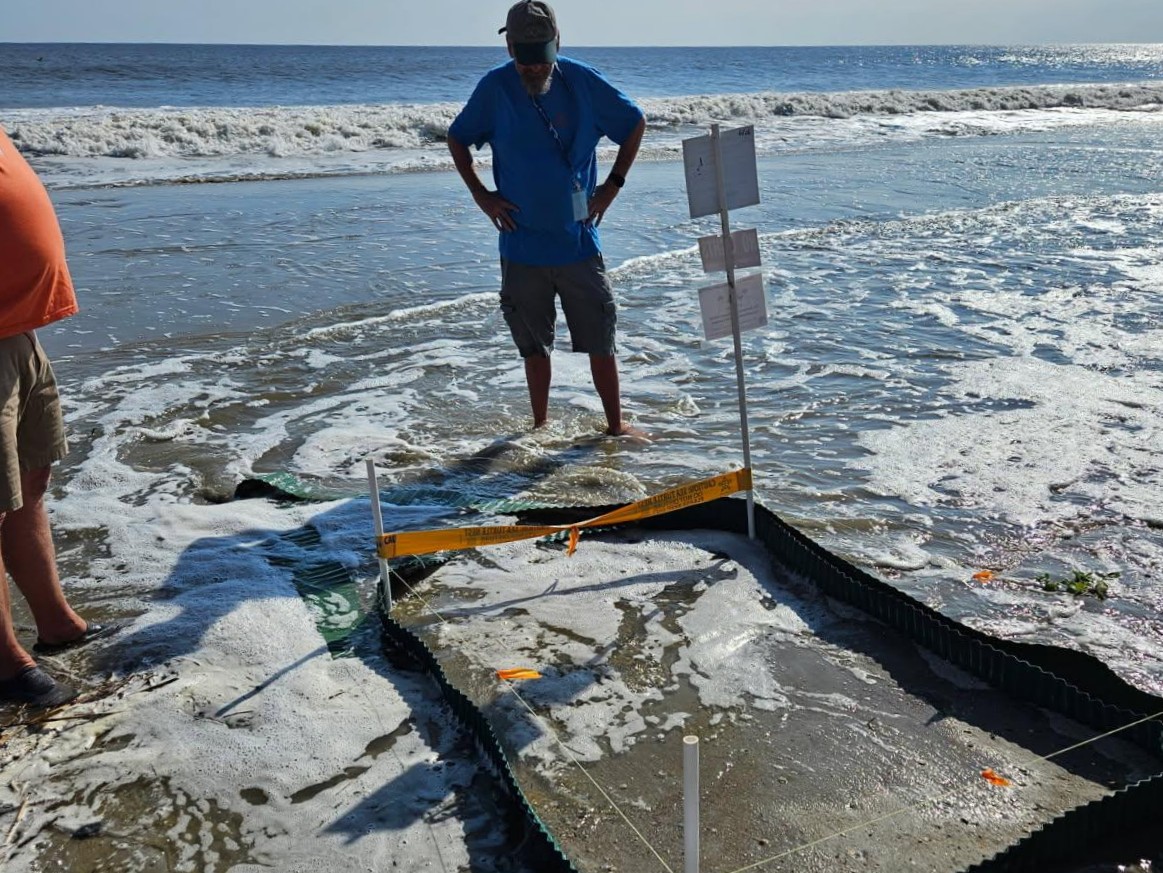
Caswell Beach Turtle Watch Co-Coordinator Jamie Lloyd began by explaining that the beach there struggled with severe erosion in the last year, especially on the east end near the mouth of the Cape Fear River, which “greatly impacted our nesting turtles as there was no beach to lay in some areas. We had a high number of false crawls. Add to that king tides and Hurricane Erin swells and we had tidal trouble for the nests that were laid.”
Lloyd said they “painfully watched” as the tidal swells from the storm overwashed nine of the 10 remaining nests for three or four days, twice a day. Some were splashed over repeatedly and a few were under standing water for hours.
“Fortunately, none of our nests or nest stakes were washed away, but some had up to a foot of sand accretion,” she said.
One nest has hatched since the storm, which Lloyd said they inventoried three days later. The nest was a large clutch of 140 eggs, with 94 developed.
“We have teams monitoring the other nine nests daily and nightly for activity. Nests that do not hatch by Day 75 of incubation will be excavated and closed with permission” from Wildlife Resources Commission, she said.
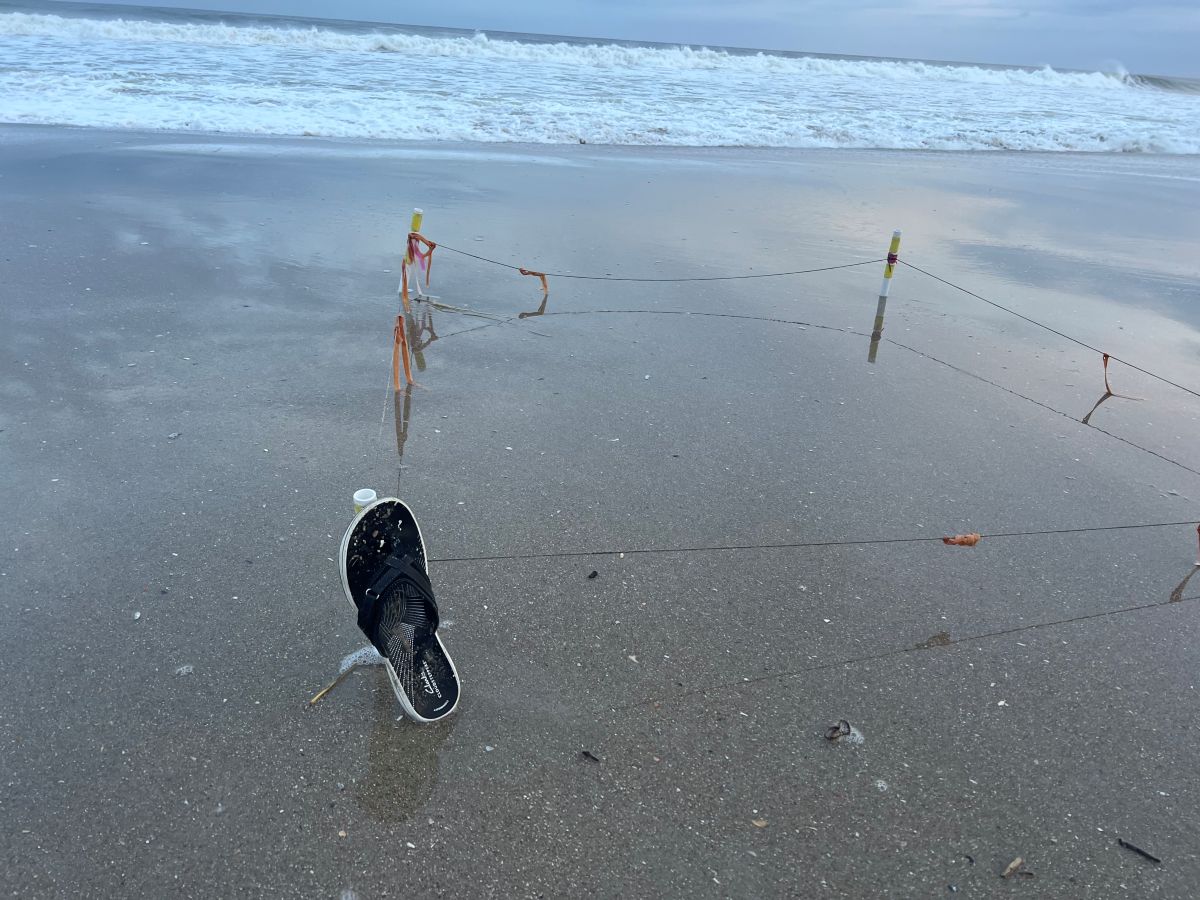
Ocean Isle Beach Sea Turtle Protection Organization Coordinator Deb Allen said the organization as of Wednesday had verified 40 nests on the island, and 17 nests emerged on or before Aug. 10.
“The surge from Hurricane Erin overwashed or submerged nests with ocean water,” which Allen said put the incubating nests in danger of partial or total loss of the nest, but four nests did emerge as the surge from Erin came close to the nests.
“Teams were able to inventory the nests, getting 424 hatchlings to their ocean home prior to nests being underwater. A visitor reported 20 hatchlings were emerging from nest 25. The team arrived as the egg chamber began to fill with water. The team was able to save 116 hatchlings from drowning,” Allen said. “We think we lost 18 nests but are hoping for a better outcome.”


